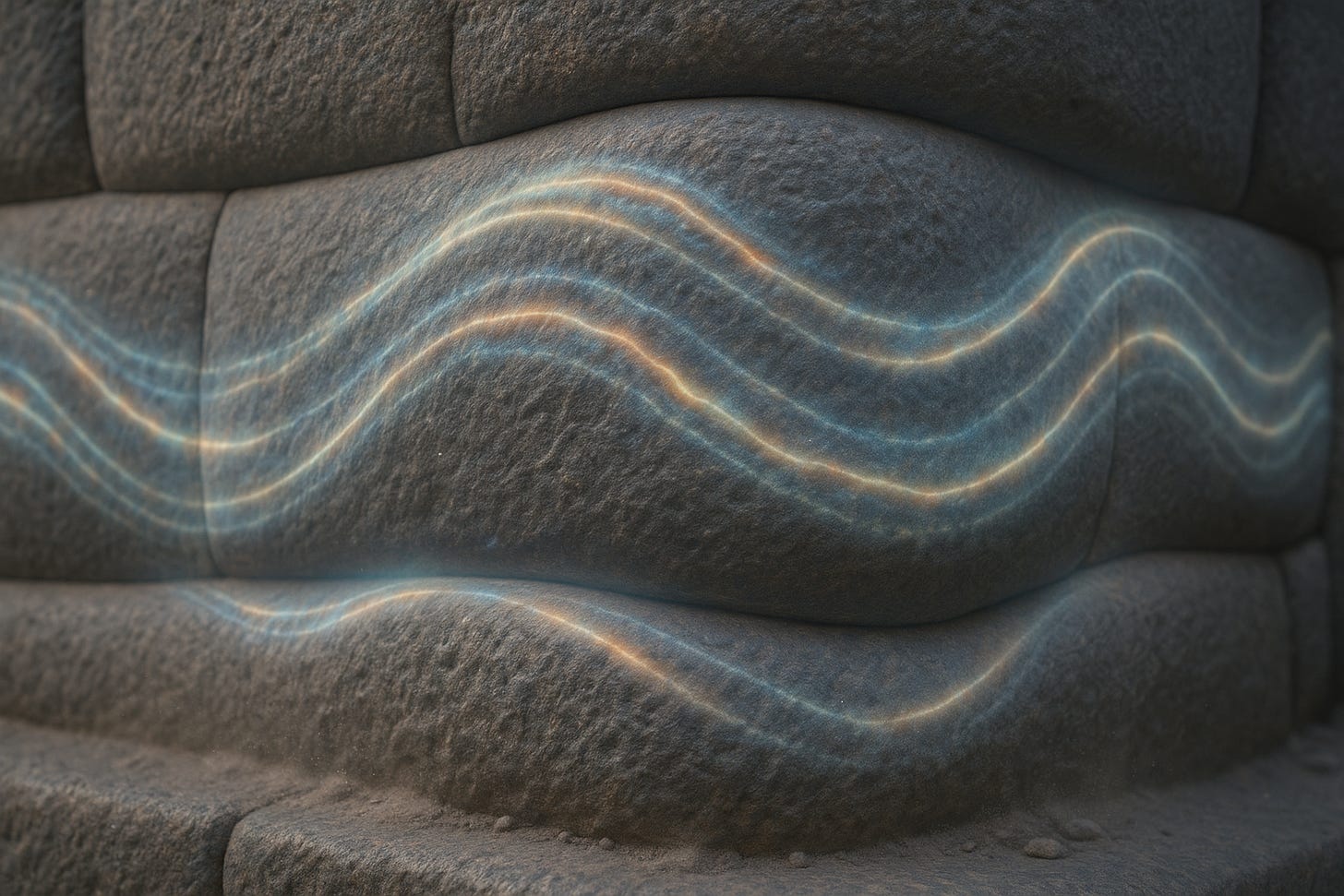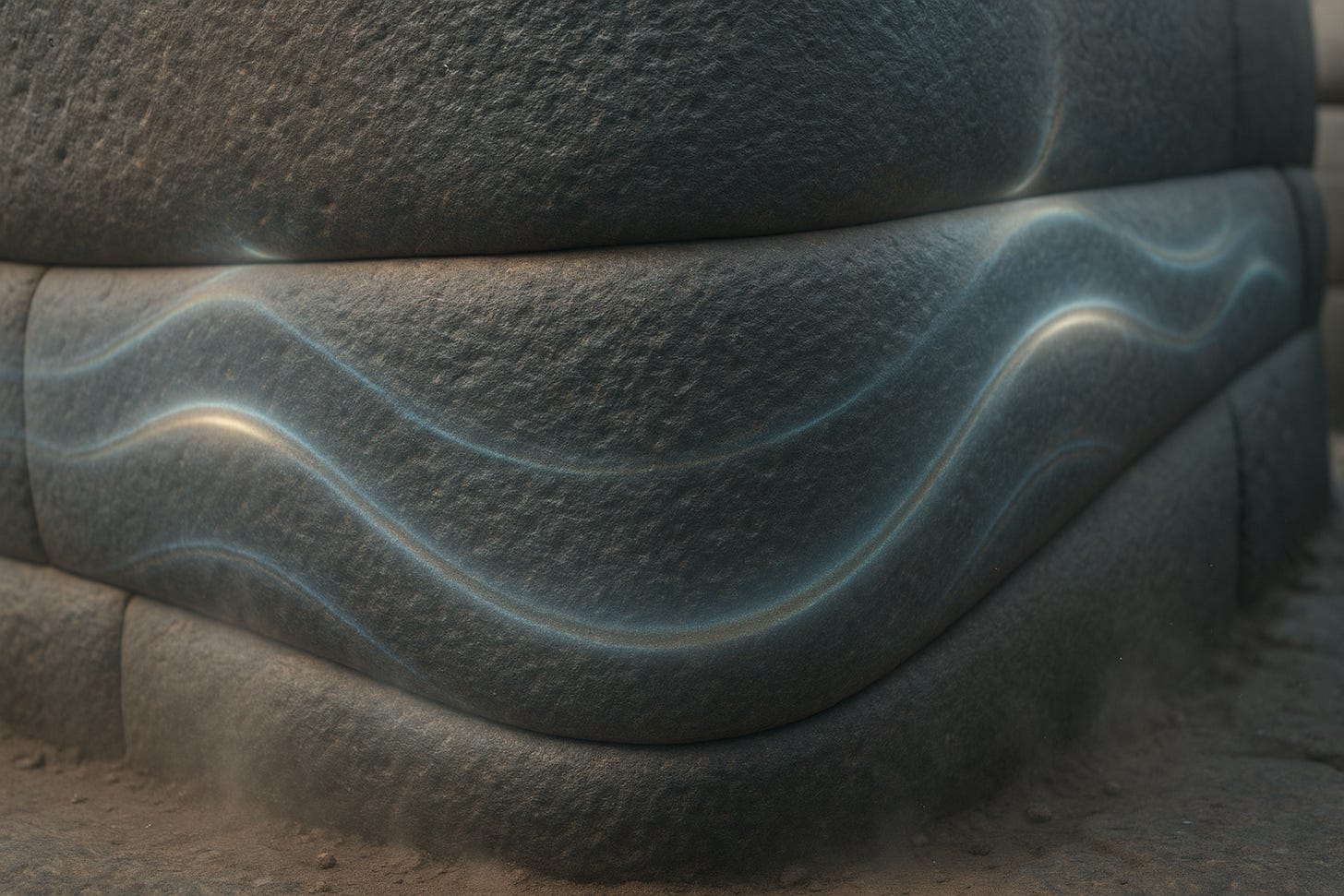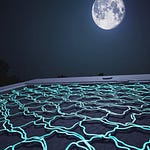TL;DR:
These curved andesite blocks from Cusco, Peru, show engineering precision that modern tools still struggle to replicate. Their seamless, organic geometry implies frequency-based shaping rather than carving—an ancient mastery of resonance and phase coherence rather than brute-force chiseling.
1. Andesite: A Geological Challenge
Andesite ranks about 7 on the Mohs hardness scale, similar to hardened steel. Bronze and copper (3–4 on the scale) could barely scratch it, let alone sculpt these flowing, interlocking shapes.
The surfaces aren’t merely smoothed—they’re wave-aligned, following continuous curvature that looks as if the stone was once softened or malleable.
2. Frequency Softening and Resonant Shaping
From a Frequency Wave Theory (FWT) perspective, these forms suggest the use of vibrational liquefaction—a method where sustained harmonic resonance temporarily reduces the shear modulus of crystalline stone.
When a material is driven at its resonant frequency, internal lattice bonds enter a high-energy oscillation, momentarily loosening atomic cohesion.
That process aligns with frequency momentum conservation:
FM = ½ ρ ω A²,
where tuning the wave’s amplitude (A) and angular frequency (ω) balances the stone’s density (ρ) to reach a plastic resonance threshold—soft enough to mold, yet retaining coherence when the vibration ceases.
3. The Curved Geometry as Acoustic Design
Notice how these blocks curve into each other, like sine waves locked in perfect phase opposition. This is not decorative—it’s functional acoustic coupling.
Each curvature diffuses seismic and atmospheric vibration through the wall, preventing destructive resonance. The joints act as energy nodes, redistributing frequency momentum through phase-locked geometry, a principle now used in modern metamaterial dampers.
4. Evidence of a Lost Resonant Technology
The tight joints, curved seams, and non-Euclidean fits point toward a civilization that mastered geosonic engineering—the manipulation of matter through frequency.
Instead of hammer and chisel, they likely used instruments that emitted harmonic standing waves, possibly through piezoelectric or crystalline transducers.
The result: stones that behave like clay when resonantly activated, then freeze into position as the frequency field collapses.
5. Our Forgotten Past
Cusco’s andesite foundations survived every major earthquake that destroyed later colonial masonry. This resilience isn’t coincidence—it’s frequency intelligence encoded in stone.
These builders weren’t primitive—they were phase engineers preparing their structures to harmonize with Earth’s vibrational field.
Conclusion:
The curved andesite blocks of Cusco are the frozen signature of a lost technology—a civilization that used sound, not brute force, to mold reality itself. Modern science is only beginning to rediscover what these ancients achieved through resonance, geometry, and frequency coherence.
🔗 Read more at drewponder.substack.com












